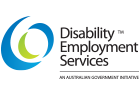
Women over 55 are considered a vulnerable demographic of Australians; they are the fastest growing group of people experiencing homelessness, increasing by 10.1 per cent from 2016 according to 2021 Australia Bureau of Statistics (ABS) data[1]. Data from atWork Australia confirms this reality; over the course of a 12-month period, mature aged clients (men and women) are three-times less likely to find employment than those within the youth demographic. For women over 55, this figure jumps to a one-in-seven chance of finding employment[2]. There are several cultural and societal factors that cause women’s economic disadvantage[3], such as an unexpected crisis, however, the skills and experience that mature aged workers can bring to the workforce are proven to create productive workplaces where the skills of the older workers compliment and fill the gaps of a younger team. While women over the age of 55 are underrepresented when it comes to job placements, data shows that they generally remain employed longer once they find work.
In a survey of 297 HR professionals in Australian organisations, research by the Australian HR Institute and the Australian Human Rights Commission[4] found that just over half (56%) of HR professionals say they are open to recruiting people aged 50-64 to ‘a large extent’. The report found some HR professionals reluctant to recruit older workers, despite many reporting no difference between older and younger workers in terms of job performance, concentration, ability to adapt to change, energy levels and creativity.
Thus, there is an opportunity for employers to overcome labour shortages by considering an age diverse workforce, while supporting a vulnerable demographic to find financial stability through sustainable employment.
For women who are 55 and not eligible for the Age Pension, assistance is available through a range of support providers to help overcome barriers to employment, for those who are wanting to re-enter the workforce. While atWork Australia report that women over 55 are a significant group of clients receiving JobSeeker payments, they are generally employed for longer once they find work3 and are eager to re-skill or re-train if necessary.
One of the benefits of employing mature aged workers is the wealth of knowledge they bring to the younger workforce. Rosemarie, a 66-year-old woman who returned to work, is now the highlight of her younger co-worker’s day. From Narellan, NSW, Rosemarie was looking for work but received no response to her applications. After two years of being unemployed, Rosemarie entered the workforce as a Warehouse Assistant preparing vegetables. The role is light, part-time work, so is suitable for Rosemarie as she does not have to bend or lift heavy items. The atWork Australia team were able to work closely with Rosemarie’s employer to make sure the workplace was safe and flexible to cater to her health conditions. “Maintaining great communication with Rosemarie was key to her success. We kept those lines of communication open at all times,” said Job Coach, Nicole.
Similarly, Joondalup, WA, local, Cheryl, was looking for sustainable employment at the age of 65. Cheryl had been unemployed for three-years and had been looking for clerical work where she had 10+ years’ experience. However, she found that no matter how many jobs she applied for; she was not hearing back. She believed her age was her biggest barrier.
Cheryl is resilient, hardworking, and determined; so, she turned to atWork Australia Joondalup for help to advocate on her behalf when it came to finding employment. Cheryl’s Job Coach, Rylea, said, ‘Cheryl was determined and willing to give anything a go; Cheryl has never let her age stop her from pursuing a career.’



